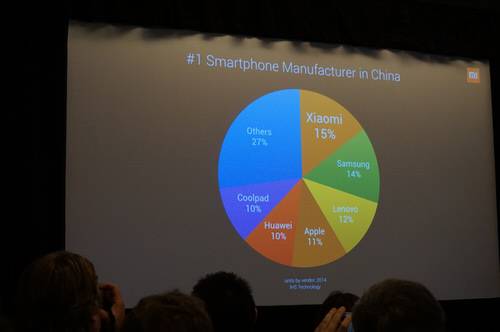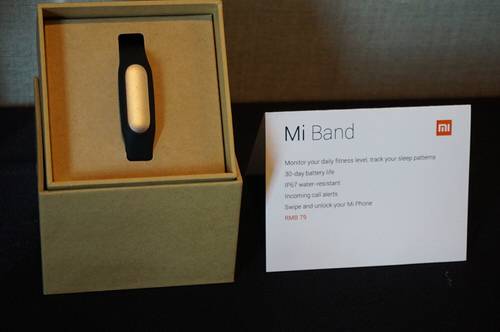Xiaomi, the tech titan that spurs a crazy load of fandom in Asia, just announced its first outreach to American consumers. Too bad that won’t include its popular line of phones.
At a press event in San Francisco on Thursday, the Chinese electronics company revealed that its Mi.com e-commerce portal will roll out for the U.S. and other markets very soon. “We’re going to launch when we’re ready,” Xiaomi VP Hugo Barra said, “and that will likely be in a time frame of a few months.”
See also: 5 Things You Need To Know About Xiaomi
Available in China, Taiwan, Hong Kong, Singapore, Portugal, Malaysia, the Philippines, India, Indonesia and (soon) Brazil, Mi.com is a pivotal part of Xiaomi’s business strategy. The site provides high-end smartphones and other goods at low prices via direct-to-consumer sales.
Co-founder Bin Lin bragged that his company sold more than 61 million units last year, and serves more than 100 million worldwide users of its MIUI software, an Android-based smartphone operating system. Unfortunately, Xiaomi’s hugely popular phones won’t be part of the Mi.com picture in America any time soon. The site will sell lower-ticket electronics and goods, like headphones, wearable devices and mobile batteries.


There’s something even more important than choice of inventory, however—an American roll-out of Mi.com helps establish a supply pipeline here and gives the company some interaction with the U.S. market. This suggests the company is setting the stage for a deeper relationship down the road.
When that might be, however, is anything but certain.
What’s Holding Xiaomi Back

Often referred to as “The Apple of China” due to the striking similarities some of its products have to iPhones and iPads, Xiaomi has numerous hurdles to clear before it can bring its smartphones to these shores. Patent law is a big one.
According to Forbes, Xiaomi made 2,318 filings last year, with plans for tens of thousands more in the works. At the moment, though, the company owns few patents of its own. That makes it complicated to enter the smartphone market in nations like the U.S., where patent protection is strong, licenses are expensive and Xiaomi has few of its own patents to bargain with.
Lin also cited the way the consumer cellular business works here as a major challenge. Customers in many other parts of the world are used to paying full retail prices, but in the U.S., people typically sign up for two-year contracts with mobile carriers, which then subsidize part of the handset cost.
That’s slowly starting to change, thanks to installment-plan models by T-Mobile and others, but it’s still not the predominant way people buy phones here. The company also wants to preserve its direct relationships with customers (or “fans,” as Bin puts it) without any extra layers or go-betweens.
These factors and others represent enormous hurdles for Xiaomi. The company relies on slim margins, so it can sell high-end phones cheaply. Going through carriers or paying out for licensing rights and patent filings could make that tough to maintain.

But it’s pretty clear that the company has more in mind than just selling earbuds or step trackers in the U.S. The company hired Android boss Hugo Barra away from U.S.-based Google. It also made the Mi Note smartphone available to American tech journalists to play with—even though it comes with beta software geared toward Chinese users. And, of course, its primary e-commerce portal will roll out here very soon.
“The amount of effort required to bring those products to the market is an incredible amount of work,” Barra said. “We’re accelerating our entering by bringing simpler products.” Translation: If you want one of Xiaomi’s Mi Note or Mi Note Pro smartphones, or a Mi Pad tablet, you’ll have to look elsewhere.
For now.
Photos by Adriana Lee for ReadWrite









